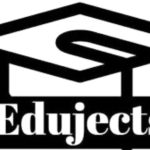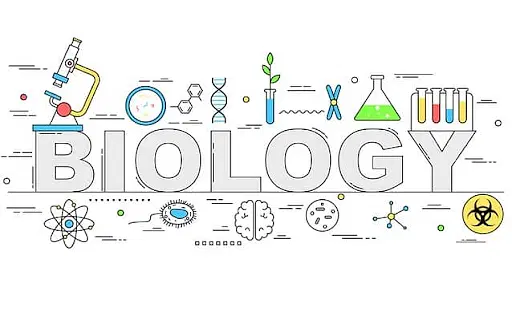This article provides a detailed, professional, and easy-to-understand lesson note for SS 2 Biology Second Term, covering the specified topics comprehensively. Each topic includes clear explanations, examples, reading assignments, and evaluation questions to enhance understanding and engagement.
WEEK 1: EXCRETION
Definition: Excretion is the biological process by which organisms eliminate metabolic waste products to maintain homeostasis.
Importance of Excretion:
- Maintains internal chemical balance.
- Prevents the accumulation of toxic substances.
- Regulates water and salt balance.
Excretory Products and Organs:
- Humans: Urea, water, and salts (Kidneys, lungs, and skin).
- Plants: Oxygen, carbon dioxide, and excess water (Stomata, lenticels, and cuticle).
Examples of Excretory Systems:
- Earthworm: Nephridia.
- Fish: Gills.
- Humans: Kidneys.
Reading Assignment:
- Textbook: Chapter on Excretory Systems in Humans and Animals.
Evaluation Questions:
- Define excretion.
- List three excretory organs in humans and their products.
- Explain how plants excrete waste.
WEEK 2: TISSUES AND SUPPORTING SYSTEMS
Definition of Tissues: Groups of similar cells that perform a specific function.
Types of Animal Tissues:
- Epithelial Tissue: Covers body surfaces (e.g., skin).
- Connective Tissue: Supports and binds (e.g., bones, cartilage).
- Muscle Tissue: Enables movement (e.g., skeletal muscles).
- Nervous Tissue: Transmits impulses (e.g., neurons).
Types of Supporting Systems:
- Exoskeleton: Found in insects and crustaceans.
- Endoskeleton: Found in mammals, reptiles, and birds.
Functions of Supporting Systems:
- Provides structural support.
- Facilitates movement.
- Protects internal organs.
Reading Assignment:
- Textbook: Sections on animal tissues and skeletal systems.
Evaluation Questions:
- Define tissues and give two examples.
- Differentiate between exoskeleton and endoskeleton.
- Mention two functions of connective tissue.
WEEK 3: COMPONENTS OF THE MAMMALIAN SKELETON
Definition: The mammalian skeleton is the internal framework that provides support and facilitates movement.
Components:
- Axial Skeleton: Includes the skull, vertebral column, and rib cage.
- Appendicular Skeleton: Comprises the limbs and girdles.
Functions:
- Support.
- Movement.
- Protection of vital organs (e.g., brain and lungs).
Examples:
- Skull: Protects the brain.
- Femur: Supports body weight.
Reading Assignment:
- Textbook: Diagrams of the mammalian skeleton.
Evaluation Questions:
- State the two main divisions of the mammalian skeleton.
- What is the function of the rib cage?
- Name two bones in the appendicular skeleton.
WEEK 4: JOINTS
Definition: Joints are points where two or more bones meet, allowing movement and support.
Types of Joints:
- Immovable Joints: Found in the skull.
- Slightly Movable Joints: Found in the vertebrae.
- Freely Movable Joints: Include hinge, ball-and-socket, and pivot joints.
Examples:
- Hinge Joint: Elbow.
- Ball-and-Socket Joint: Hip.
- Pivot Joint: Neck.
Reading Assignment:
- Textbook: Diagrams of joint types.
Evaluation Questions:
- Define joints.
- Mention three types of joints and examples.
- Describe the function of a ball-and-socket joint.
WEEKS 5 & 6: ALIMENTARY CANAL/DIGESTIVE SYSTEM
Definition: The alimentary canal is a continuous tube in the body through which food is ingested, digested, absorbed, and egested.
Structure:
- Mouth: Ingestion and initial digestion.
- Esophagus: Transfers food to the stomach.
- Stomach: Mixes food with digestive enzymes.
- Small Intestine: Absorbs nutrients.
- Large Intestine: Absorbs water and forms feces.
Digestive Enzymes:
- Amylase: Breaks down starch.
- Protease: Breaks down proteins.
- Lipase: Breaks down fats.
Reading Assignment:
- Textbook: Functions of digestive enzymes.
Evaluation Questions:
- List the parts of the alimentary canal.
- What is the role of amylase?
- Describe the function of the small intestine.
WEEK 7: FEEDING HABITS
Definition: Feeding habits refer to the various ways organisms obtain and consume food.
Types:
- Herbivores: Feed on plants (e.g., cows).
- Carnivores: Feed on meat (e.g., lions).
- Omnivores: Feed on both plants and animals (e.g., humans).
- Detritivores: Feed on dead organic matter (e.g., earthworms).
Reading Assignment:
- Textbook: Examples of feeding adaptations.
Evaluation Questions:
- Define feeding habits.
- Differentiate between herbivores and carnivores.
- Give two examples of omnivores.
WEEK 8: FEEDING IN AMOEBA, HYDRA, AND MAN
Amoeba:
- Uses pseudopodia to engulf food by phagocytosis.
Hydra:
- Captures prey using tentacles and stinging cells.
Man:
- Ingests food through the mouth and digests it in the alimentary canal.
Comparison:
- Amoeba and Hydra lack specialized organs, while humans have a complex digestive system.
Reading Assignment:
- Textbook: Comparison of feeding in Amoeba and humans.
Evaluation Questions:
- How does Amoeba feed?
- What is the role of tentacles in Hydra?
- Describe human feeding.
WEEK 9: TRANSPORT SYSTEMS
Definition: Transport systems move substances within an organism.
Types:
- In Plants: Xylem (water) and Phloem (nutrients).
- In Animals: Blood circulatory system.
Examples:
- Humans: Blood carries oxygen and nutrients.
- Plants: Xylem transports water from roots to leaves.
Reading Assignment:
- Textbook: Mechanisms of transport in plants and animals.
Evaluation Questions:
- Define transport systems.
- Differentiate between xylem and phloem.
- What does blood transport in humans?
WEEK 10: CIRCULATORY SYSTEM IN MAMMALS
Definition: The circulatory system transports blood and nutrients throughout the body.
Components:
- Heart: Pumps blood.
- Blood Vessels: Arteries, veins, and capillaries.
- Blood: Carries oxygen, nutrients, and waste.
Reading Assignment:
- Textbook: Diagrams of the heart and blood vessels.
Evaluation Questions:
- List the components of the circulatory system.
- What is the function of the heart?
- Name two types of blood vessels.
WEEK 11: MECHANISM OF TRANSPORT IN HIGHER PLANTS
Definition: The process by which water, nutrients, and food are moved in plants.
Mechanisms:
- Transpiration Pull: Movement of water through xylem.
- Capillarity: Movement of water in narrow tubes.
- Active Transport: Movement of nutrients against a concentration gradient.
Examples:
- Water from roots to leaves via xylem.
- Glucose from leaves to roots via phloem.
Reading Assignment:
- Textbook: Functions of xylem and phloem.
Evaluation Questions:
- Explain transpiration pull.
- Define active transport.
- What is the role of phloem in plants?

